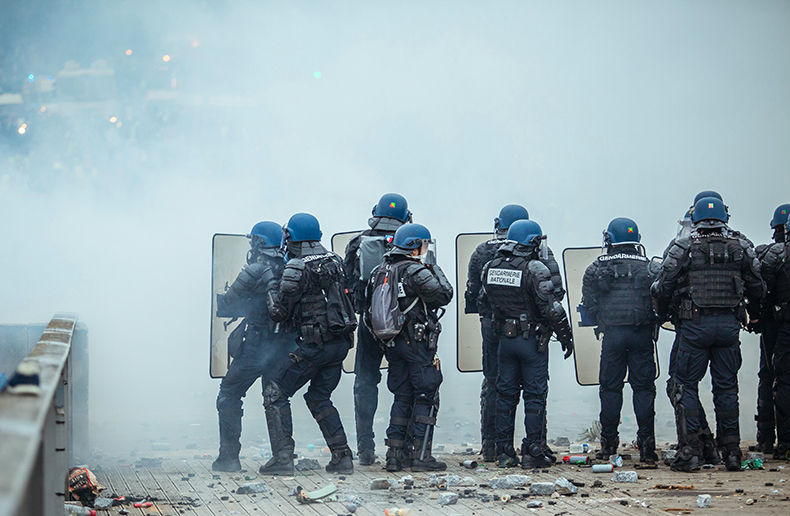Claims resulting from strikes, riots, and civil commotions have surged, reaching a historical high, Swiss Re notes in a recent blog post. This type of claim, known by the acronym SRCC (Strikes, Riots, and Civil Commotion), has become a major concern for insurers and reinsurers, according to Mohit Pande of Swiss Re.
Pande, the reinsurer’s Chief Underwriting Officer Property, reports in a blog article published on March 12, 2024 that SRCC claims skyrocketed by 3,239 per cent between 2000 and 2020.
He observes that in the past it was almost unheard of for a claim of this nature to cause over a billion dollars USD in damages. One example on record that he cites is the 1992 Los Angeles riots following the acquittal of the police officers responsible for beating Rodney King.
More recently, however, the 2023 riots in France, the 2020 Black Lives Matter protests in the United States, and the demonstrations that disrupted Chile from 2019 to 2021 have each surpassed the billion-dollar damage threshold.
According to the Carnegie Endowment for International Peace's Global Protest Tracker, over 132 countries have experienced protests since 2017. In 23 per cent of these instances, the protests lasted more than three months.
"The growing frequency of events, populist and anti-establishment movements have triggered a rise in polarisation among populations and a greater willingness to protest,” Pande writes.
Meanwhile, challenging economic conditions in many countries, marked by rising costs for food, energy, and housing, compel governments to make unpopular decisions, such as increasing tax revenues.
When adding the impact of supply chain issues arising from conflicts, notably in Ukraine and the Middle East, inflationary pressures are expected to persist.
Mobilization and social media
Pande highlights the enhanced mobilization effect enabled by the growing use of social media as an information source. In 2023 in France, the circulation of a video showing a police officer shooting at a motorist during a routine check exacerbated social tensions and mobilized protestors.
The potential impact of such events is much greater than it was 50 years ago, Pande adds, due to the increasing proportion of the population living in cities. This observation also applies to damages related to natural disasters, where costs soar when densely populated areas are affected.
“In urban environments, retailers and public infrastructure are particularly vulnerable to broad, simultaneous protests and can accumulate losses very quickly,” Pande writes.
Solutions
His reflection then turns to solutions aimed at mitigating the risk exposure resulting from such events.
Accurate risk assessment and pricing for SRCC are crucial for insurers and reinsurers and represent an area that should continually improve.
Coverage considerations must also be taken into account, “looking at silent coverage versus explicit extensions, and the extent of specific provisions such as exclusions or limitations.”
Policy wording covering this risk needs enhancement, he adds. Revisiting the definitions of SRCC included in contracts is necessary to limit the guarantee to expected parameters. Drawing exact lines is not straightforward, according to Pande. “However, transparent and accurate definitions can help in distinguishing key differences, such as between riots and terror events, for example,” he explains.
“We must prepare for a world in which potential centres of SRCC break-out have multiplied and can spread more quickly and widely. As social economic factors increase the magnitude of loss and the unpredictability of the risk, it's paramount that the industry leverages data and technology to manage this growing risk through improved exposure assessment, adequate risk pricing, better accumulation control and clear contractual wordings.”







